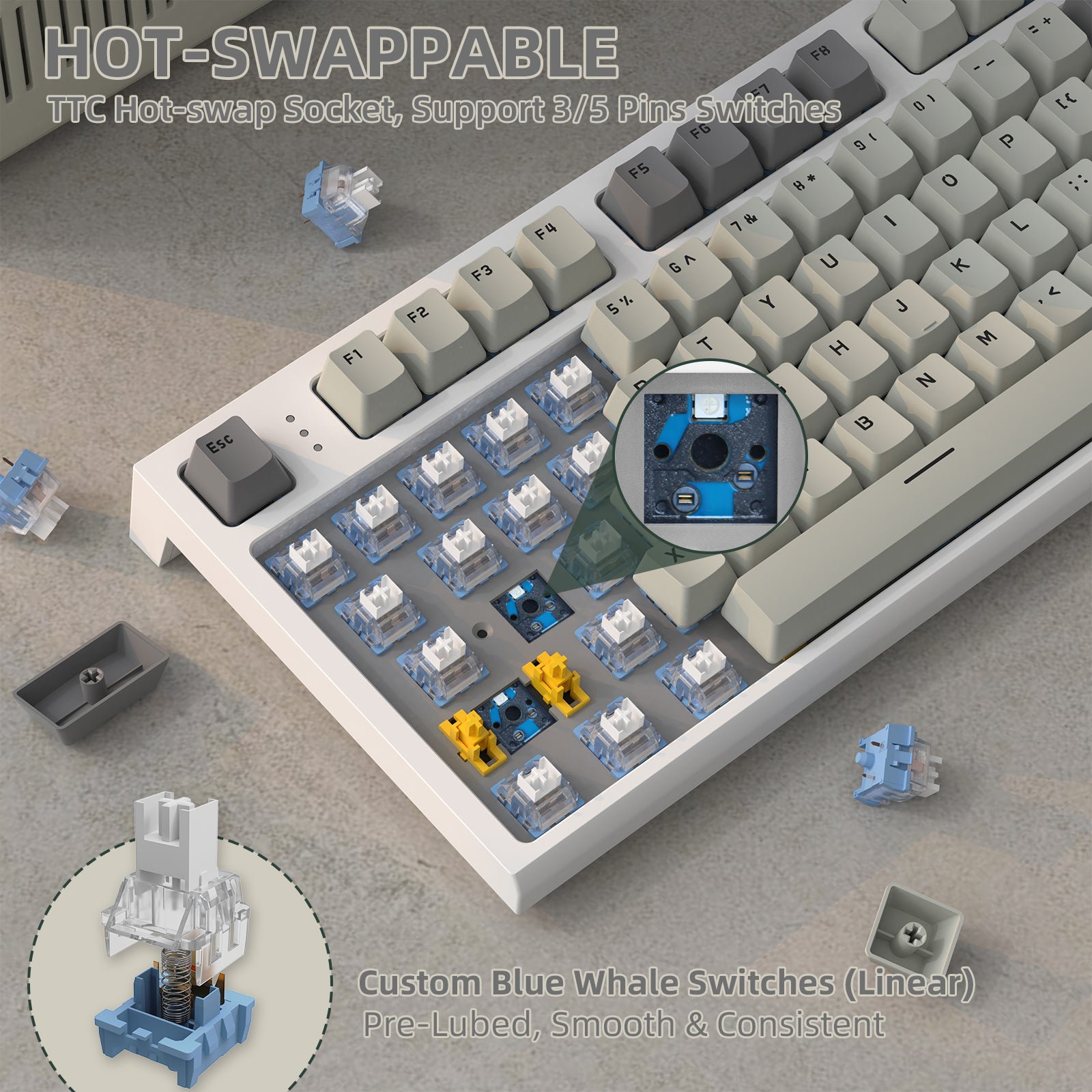Unlock the Secrets of Mechanical Keyboards: Why They’re a Game Changer for Your Typing Experience!
In recent years, mechanical keyboards have surged in popularity, becoming a staple for both gamers and professionals alike. Unlike traditional non-mechanical keyboards, which utilize rubber domes to register keystrokes, mechanical keyboards rely on individual mechanical switches for each key. This fundamental difference not only enhances the typing experience but also offers a level of customization and feedback that many users find addictive. In this article, we will delve into the features and advantages of mechanical keyboards, exploring why they are considered a game changer in the world of typing.

Understanding Mechanical Keyboards
Mechanical keyboards are defined by their use of individual mechanical switches beneath each keycap. These switches contain a housing, a spring, and a stem, which work together to register a keystroke when pressed. The feel and sound of a mechanical keyboard can vary significantly depending on the type of switch used. There are several types of switches, including tactile, linear, and clicky switches, each offering a unique typing experience. For instance, tactile switches provide noticeable feedback when pressed, while linear switches are smooth and quiet, making them ideal for fast-paced gaming. Understanding these components is key to appreciating the mechanics behind these popular typing tools.
Features of Mechanical Keyboards
The allure of mechanical keyboards lies in their rich array of features. One of the most notable characteristics is the ability to customize keycaps, allowing users to personalize their keyboards to suit their style. Many mechanical keyboards also come equipped with RGB lighting, enabling users to create stunning lighting effects that can enhance their gaming setup or workspace ambiance. Additionally, the build quality of mechanical keyboards is typically superior to that of their membrane counterparts, often featuring durable materials that withstand heavy use. These features not only enhance aesthetics but also contribute to a more engaging and enjoyable typing experience.
Advantages of Using Mechanical Keyboards
There are numerous advantages to using mechanical keyboards, which can significantly improve your typing experience. For starters, many users report increased typing speed due to the tactile feedback and actuation point of mechanical switches, which can help reduce errors. The durability of mechanical keyboards is another significant benefit; they can withstand tens of millions of keystrokes compared to the relatively short lifespan of membrane keyboards. Comfort is also a key factor, as many mechanical keyboards come with ergonomic designs that can reduce strain during long typing sessions. When compared to membrane keyboards, which often feel mushy and lack feedback, mechanical keyboards provide a satisfying and responsive experience that can enhance both productivity and enjoyment.
Choosing the Right Mechanical Keyboard
When selecting a mechanical keyboard, it's essential to consider several factors to ensure it meets your needs. First, the type of switch is crucial; if you prefer a tactile feel, opt for tactile switches, while linear switches might be better for gamers seeking speed. The size of the keyboard is another consideration; full-sized keyboards have a number pad, while compact models save space and are easier to transport. Additionally, think about any additional features you may want, such as programmable keys or customizable lighting. Personal preferences based on your typing style and primary use cases—whether that’s gaming, coding, or general typing—will also influence your decision. Exploring these aspects can make a significant difference in your overall satisfaction with your mechanical keyboard.
Elevating Your Typing Experience with Mechanical Keyboards
In summary, mechanical keyboards offer a host of features and advantages that elevate the typing experience for users of all types. From their unique switch mechanisms to customizable options and superior build quality, these keyboards stand out in a crowded market. Whether you're a gamer looking for speed and precision, or a professional seeking comfort and durability, investing in a mechanical keyboard can be a transformative decision. With the right choice, you’ll find that these keyboards not only enhance your productivity but also make typing a more enjoyable activity.



